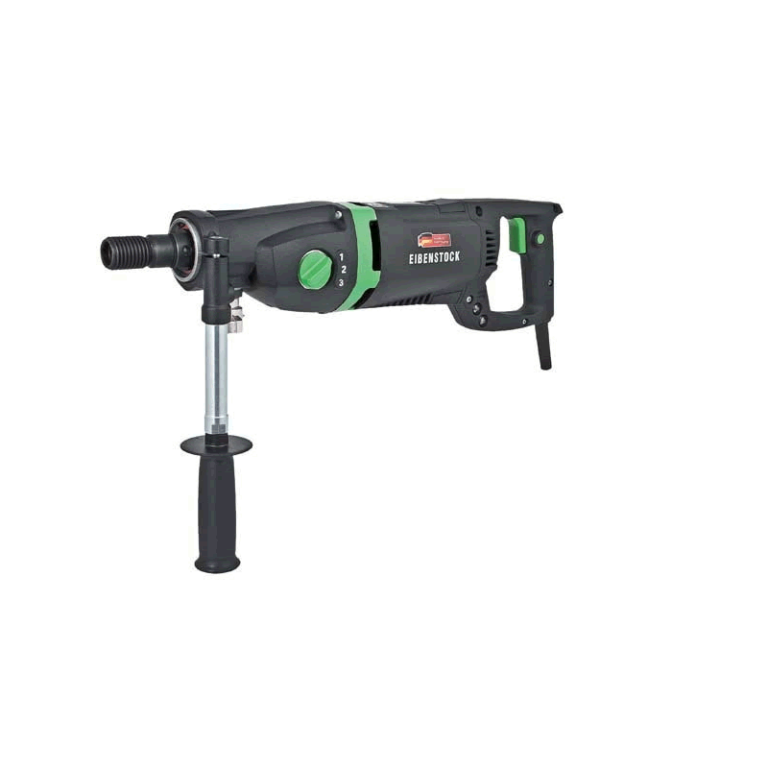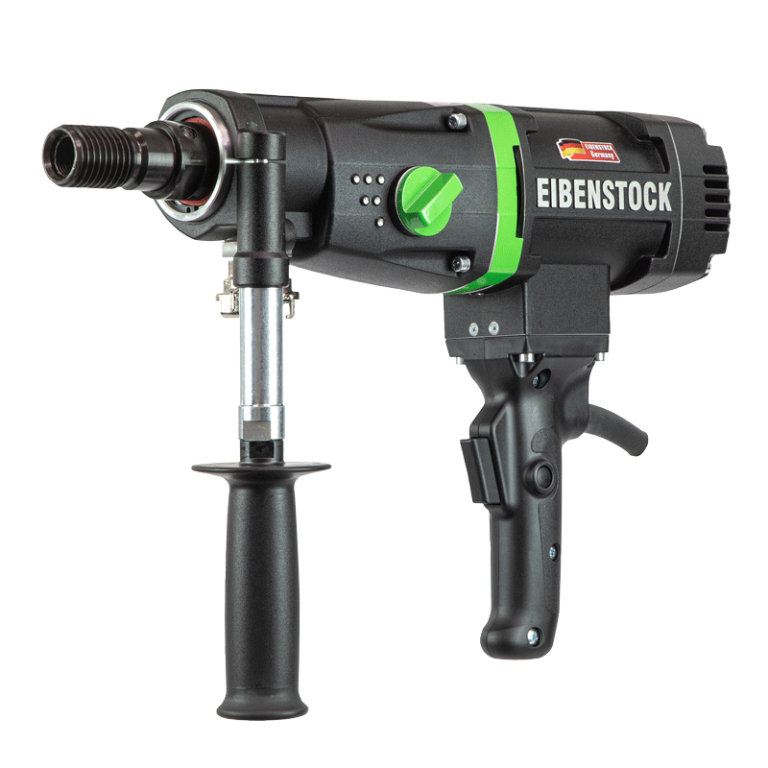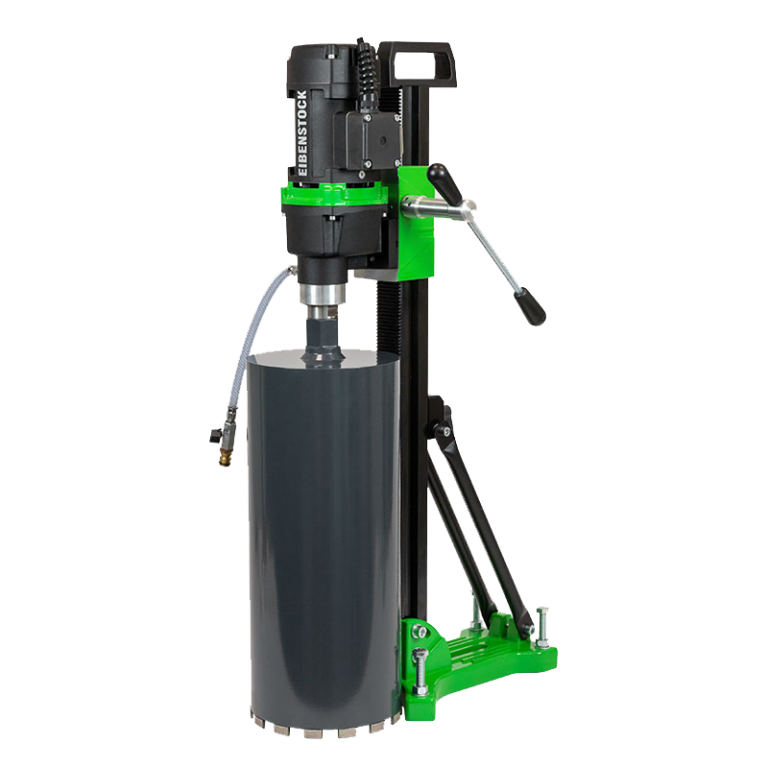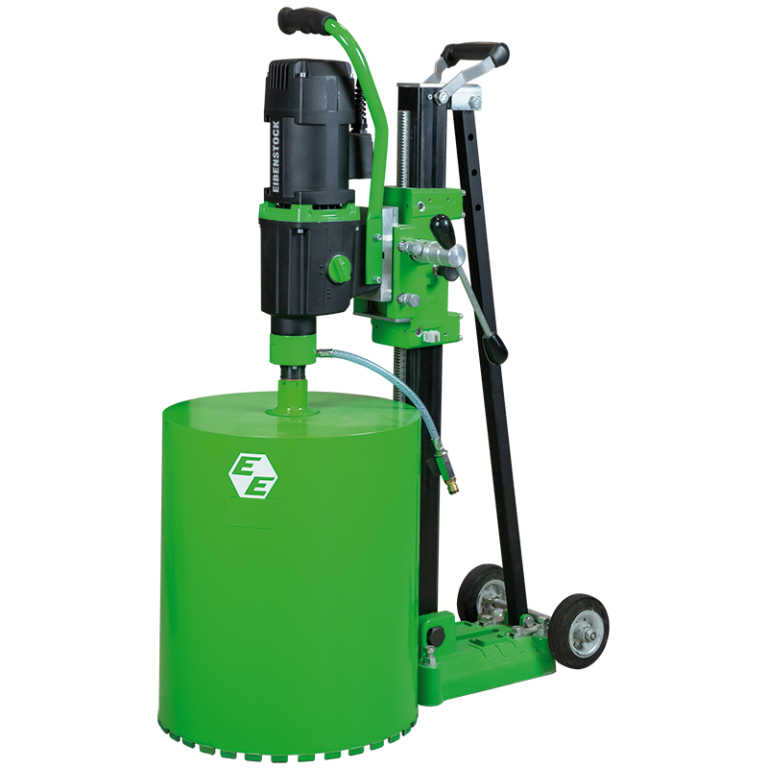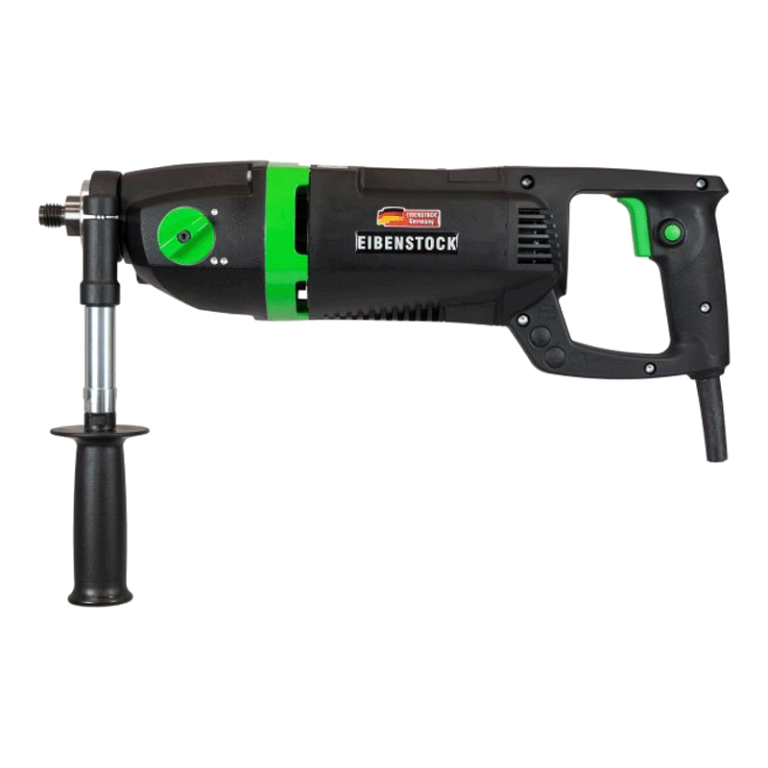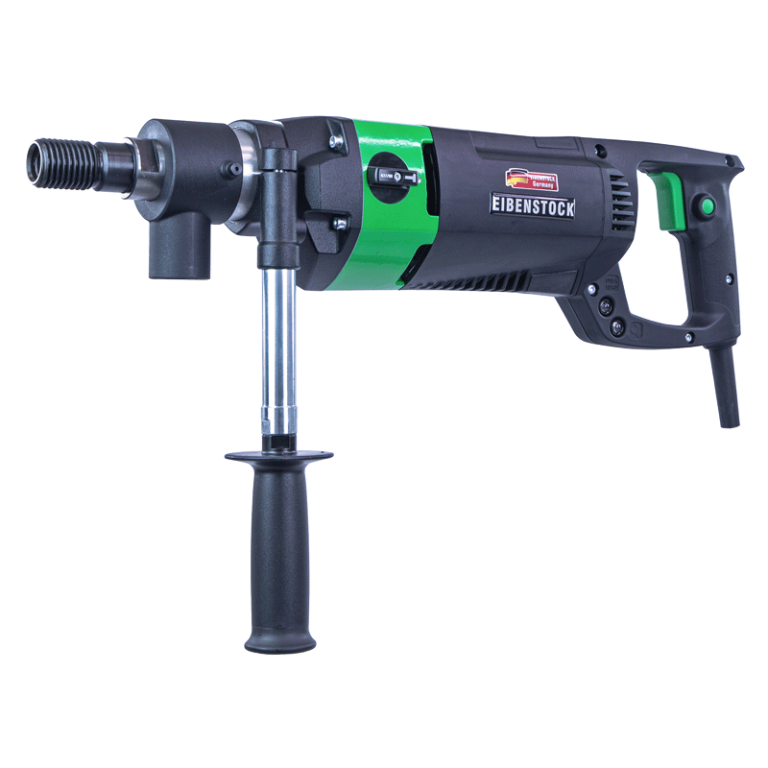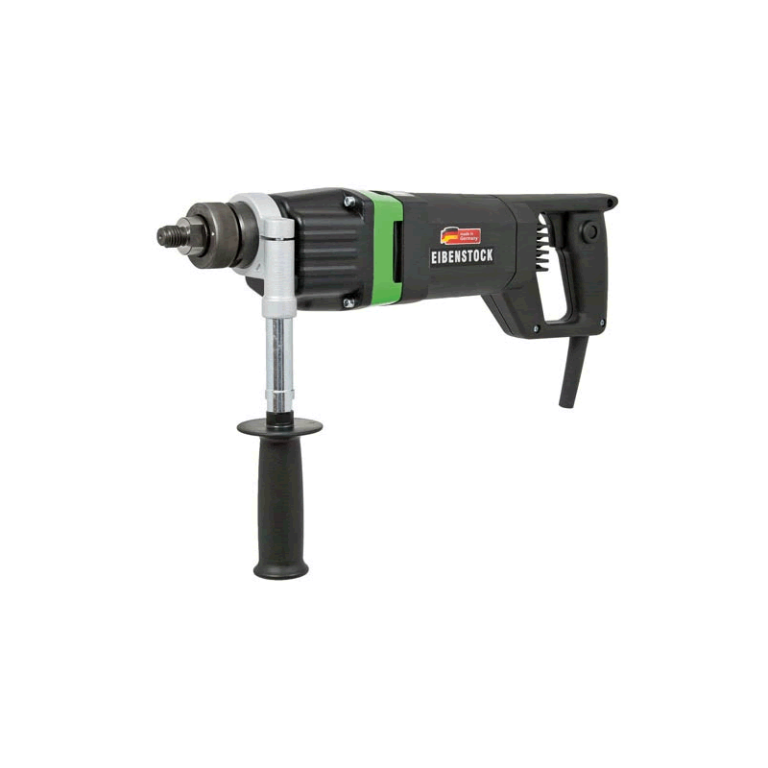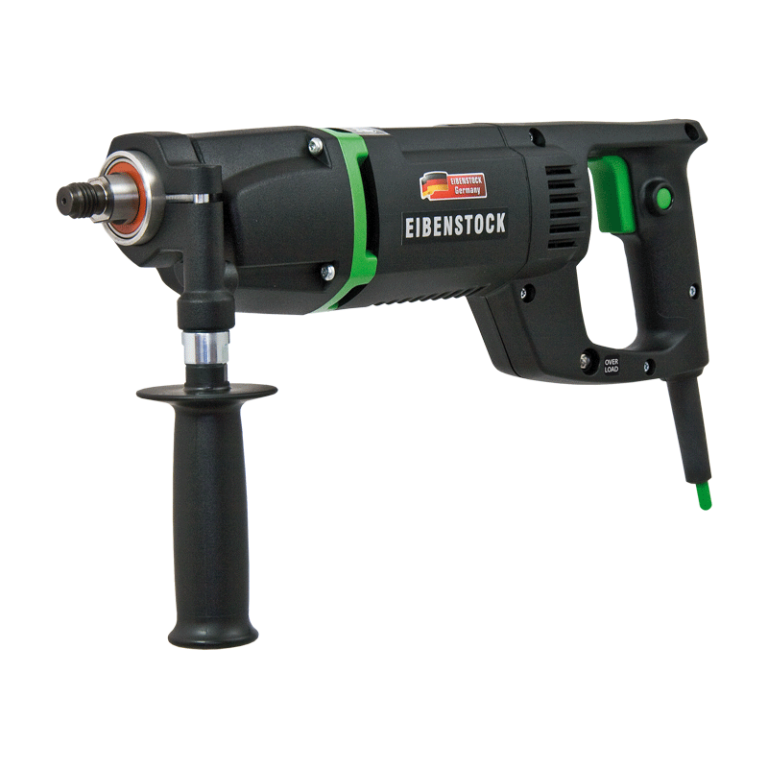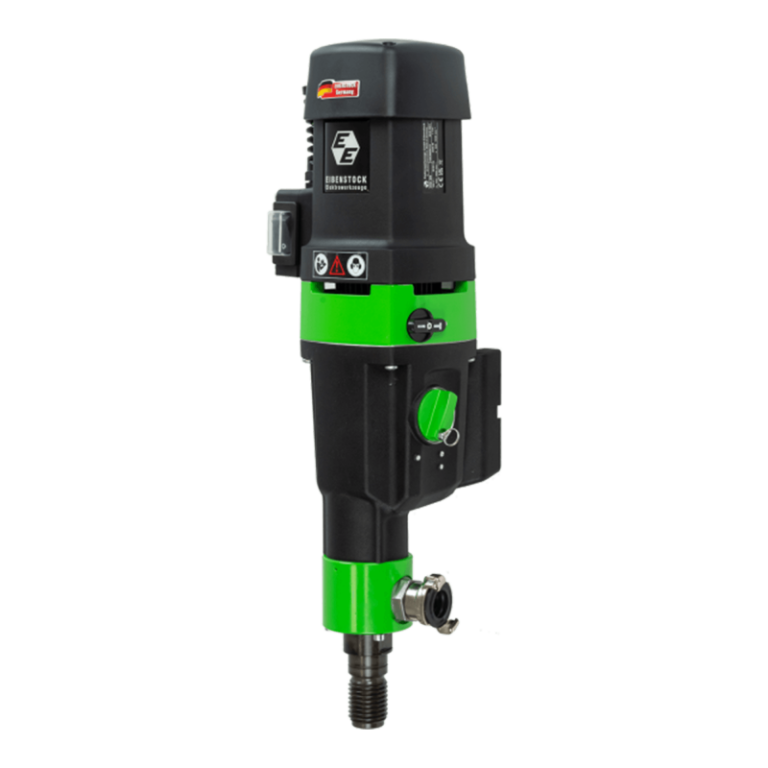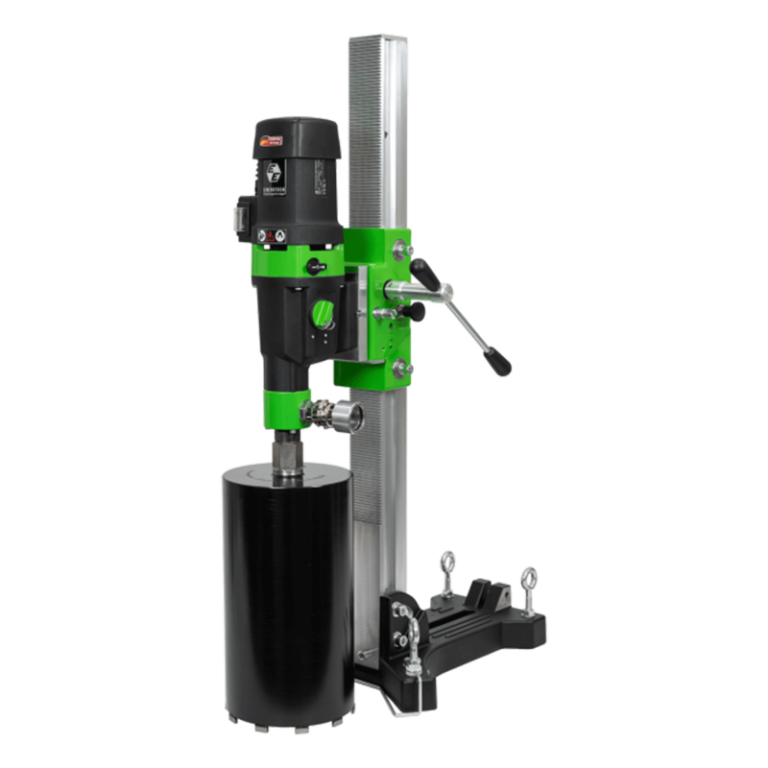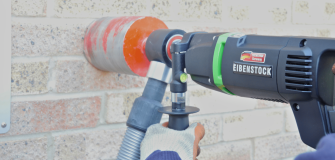Wet vs. Dry Diamond Core Drilling: When to Use Each Method
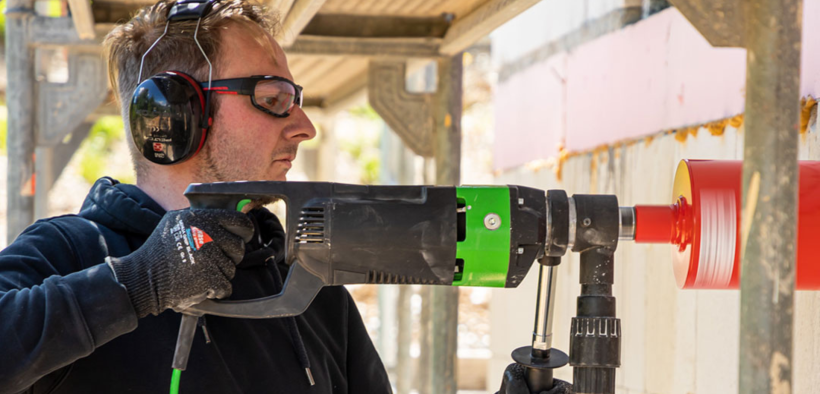
When it comes to core drilling, as a professional, you must decide between wet and dry drilling based on material type, job conditions, and project requirements. Choosing the correct method significantly affects efficiency, tool longevity, and worksite cleanliness. EIBENSTOCK, a global leader in industrial power tools, offers high-performance wet and dry drilling equipment designed for durability and precision.
Understanding the differences between wet and dry drilling can help you make informed decisions, ensuring optimal results for every application.
What is Wet Diamond Core Drilling?
Wet diamond core drilling involves using water to cool the core bit and suppress dust, making it an effective solution for challenging materials. The presence of water prevents overheating and extends the lifespan of diamond core bits, which are commonly used in wet drilling applications. This method is particularly useful in projects involving reinforced concrete, natural stone, and masonry, where durability and precision are critical.
Advantages of Wet Diamond Core Drilling:
- Increased Bit Longevity: Water minimises friction and heat buildup, reducing wear on the core bit.
- Higher Cutting Efficiency: The lubrication effect of water enables faster drilling speeds.
- Better Performance in Hard Materials: Essential for reinforced concrete, granite, and thick masonry walls.
- Reduced Risk of Overheating: Prevents drill motors from overheating, increasing overall tool lifespan.
Best Performing Wet Diamond Core Drills From EIBENSTOCK
Powered by a 2,200W motor with a 3-speed gearbox, the ETN 162 supports wet core drilling up to 162mm and dry drilling up to 202mm, with options for water feed or integrated dust extraction.
The PLD 182.1 is a powerful 8″ diamond drill with a compact pistol-grip design, perfect for wet and dry coring through tough materials. Featuring a 2300W motor, three-speed gearbox, and mechanical clutch.
The PL 200 wet diamond drilling unit is a powerful, rig-mounted drill designed for precision and efficiency in wet diamond drilling. Ideal for professionals, it tackles reinforced concrete, masonry, and tough materials with ease.
Designed for large-diameter drilling with a robust 3-speed gearbox. Built for professional contractors, the PLE450.2 offers reliable, high-performance diamond drilling. Built for professional contractors to provide high performance.
What is Dry Diamond Core Drilling?
Dry diamond core drilling, in contrast, does not require water, making it a more portable and convenient method for specific jobs. It is particularly suited for softer materials such as brick, blockwork, and aerated concrete, where dust extraction systems are effective in managing debris. Professionals prefer dry drilling in environments where water usage is impractical, such as electrical and plumbing installations, as well as in sensitive environments such as hospitals and office buildings. The added benefit of dust control makes dry diamond core drilling a preferred choice.
Advantages of Dry Diamond Core Drilling:
- Greater Mobility: Does not require water supply, making it easier to use in confined spaces.
- Cleaner Worksite: No water cleanup is required, reducing mess and simplifying post-job maintenance.
- Suitable for Softer Materials: Works well with brick, blockwork, and light concrete applications.
- Ideal for Electrical and Plumbing Work: Allows quick, precise cuts without water interference.
- Effective Dust Extraction Options: These can be paired with dust extraction systems to manage dust output efficiently.
Best Performing Dry Core Drills From EIBENSTOCK
The EHD 2002 is a professional-grade dry diamond core drill, designed for power, precision, and safety. Equipped with a 2-speed gearbox, mechanical clutch, and a robust 1800W motor, it delivers top-tier performance for demanding drilling tasks.
The ESD 162 percussion dry diamond drill is expertly engineered for drilling through tough materials like reinforced concrete and stone and features EIBENSTOCK’s advanced Impact Hybrid Technology (IHT) to deliver high performance no matter the task.
The ESD 1801 is a soft percussion dry core drill designed to handle drilling up to 90mm holes in tough materials like highly compressed limestone, concrete, and other abrasives.
The EHD 1500 diamond drill is a single-speed drill designed for drilling holes up to 82mm in brick and block. Ideal for a wide range of professional contractors, including plumbers, gas fitters, engineers & more.
The EIBENSTOCK ESD 200 is a high-performance percussion core drill designed for dry drilling hard materials, including reinforced concrete, traditionally requiring wet drilling.
The EIBENSTOCK DSE 200 is a specialised dry diamond drilling unit equipped with an advanced soft vibro-percussion function and features innovative Impact Hybrid Technology.
When to Use Wet vs. Dry Diamond Core Drilling
Material Type
- Wet Drilling: Reinforced concrete, granite, natural stone
- Dry Drilling: Brick, blockwork, soft concrete
Dust Control
- Wet Drilling: Suppresses dust with water, sludge can be extracted
- Dry Drilling: Requires dust extraction system
Bit Longevity
- Wet Drilling: Longer lifespan due to cooling
- Dry Drilling: Shorter lifespan due to heat buildup
Drilling Speed
- Wet Drilling: Faster due to reduced friction
- Dry Drilling: Slower due to increased resistance
Portability
- Wet Drilling: Requires water feed, less portable
- Dry Drilling: Highly portable, no water needed
Application
- Wet Drilling: Structural, industrial, and heavy-duty projects
- Dry Drilling: Residential, electrical, and plumbing work
Key Considerations When Choosing a Drilling Method
Worksite Conditions:
- If working indoors or in a controlled environment where dust suppression is crucial, such as electrical installations, plumbing, or hospital environments, dry core drilling is preferable.
Material Hardness:
- Harder materials, such as concrete, granite, and stone, require wet drilling for precision and efficiency.
- Softer materials like brick and aerated concrete can be drilled using dry methods.
Tool Longevity & Maintenance:
- Wet drilling extends the life of drill bits and motors by preventing overheating.
- Dry drilling requires frequent cooling breaks and a dust extraction system to maintain performance.
Combination Drilling Tools for Maximum Flexibility
For professionals who require both wet and dry drilling capabilities, EIBENSTOCK offers a range of models with both wet and dry drilling features. These drills allow you to switch between wet and dry methods based on project demands, improving efficiency and adaptability.
Recommended EIBENSTOCK Wet & Dry Diamond Core Drills:
- ETN 162/3 Wet & Dry Diamond Drill
- PLD 182.1 Wet & Dry Diamond Drill
- DBE 162 Wet & Dry Diamond Drilling Unit
- PLE 182 Wet & Dry Diamond Drilling Unit
Selecting the right drilling method is crucial for achieving the best results while maintaining efficiency and safety. Wet drilling is the preferred choice for cutting through hard materials with minimal dust, while dry drilling offers greater convenience and portability for soft materials and locations where water cannot be used.
EIBENSTOCK’s extensive range of high-quality core drills ensures professionals have the right tools for every job. Whether using wet, dry, or both, choosing the correct method guarantees precision, speed, and durability. Investing in the right equipment for specific applications results in safer worksites, extended tool life, and superior performance on every project.

